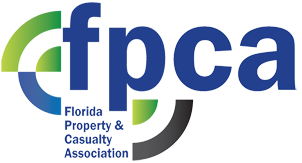United Automobile Insurance Co., a nonstandard automobile insurer in Florida, recently defended itself against a lawsuit for $2.59. The practice is relatively common and it is an example of the rampant abuse in the state’s personal injury protection benefits system, the company said.
Richard Parrillo, chief executive officer of UAIC, said PIP plaintiffs and their attorneys are using the court system as a “money machine.” His insurance company has received many lawsuits from attorneys seeking less than $5 because attorneys are regularly awarded $300 to $500 in fees per hour.
“They know they will have success in court,” Parrillo told BestWeek. “That’s just the way it is here. We never get called for the money first. We just get sued. It is absolutely ridiculous. This obviously has nothing to do with getting $3 from me — it’s about the hundreds of hours billed by attorneys for fees.”
The practice is not reserved for the smaller insurers. State Farm said it too has seen its share of lawsuits seeking peculiar awards under the premise that the insurer failed to provide benefits and breached its contract. The company calls the fees “one-way attorneys’ fees” because although insurers have to pay plaintiffs’ attorneys, if an insurer wins a case, plaintiffs do not have to pay fees incurred by insurers.
“It is a very broken system,” said Russ Kile, State Farm sections manager for its special investigations unit. The company is looking to raise rates by an overall statewide average of 9.2%, in part because the company has seen higher costs for PIP as well as bodily injury liability and uninsured motorists (BestWire, Feb. 5, 2009).
“The courts are a playground for the plaintiff bar,” Kile said. “People have learned they can get away with it. There is an incentive to litigate.”
In 2007 the Florida PIP law sunset but Gov. Charlie Crist brought it back, signing a revised law into effect late in December of that year (BestWire, Dec. 31, 2007). Many auto insurers in the state were in favor of the law’s sunset. The newer law was supposed to reduce costs, litigation and fraud. Florida motorists must purchase PIP insurance, which covers 80% of an injured person’s medical bills and 60% of lost wages up to $10,000 — a threshold insurers say is easy to get to with a little “up-coding” of insurance forms, Kile said.
The state Division of Insurance Fraud has found that PIP fraud increased 41% from the first quarter of fiscal year 2008/2009 to the fourth quarter of fiscal year 2008/2009, according to a report released last August. The division estimates more than 80% of all PIP insurance claims involve some aspect of fraud in connection to unrelated, unnecessary and excessive treatment. Between $250 and $500 out of every $1,000 paid in premium goes to doctors and attorneys.
“There is blatant over-treatment and fraud,” said Jimmy Whited, president of nonstandard underwriter Windhaven Insurance Co. “A car with zero to $500 in damage — and clinics are treating the driver and passengers to the limits. It’s a disaster.”
Whited said some clinics will offer a person $1,000 to be involved in a staged accident. Then the clinic will do what it can to get to the $10,000 limit.
“Everybody is getting crushed,” Whited said of the insurance market. “People are running away from the place. Agents are losing all their companies. It’s tough to do business here, that’s for sure.”
Whited said the government needs to “figure out a way and make some hard changes in the system.” Kile suggested some kind of tightening in the medical fee schedule but sometimes the “fix is worse than dealing with what is” because insurers also see a spike in litigation to interpret new laws. Parrillo said there has to be more than slap on the wrist for those who abuse the system.
“This is all completely overlooked right now because those we count on to investigate the fraudulent claims we send are overloaded,” Parrillo said.
The top five writers of private passenger auto insurance in Florida in 2008, according to BestLink, were: State Farm Group, with a 21.9% market share; Berkshire Hathaway Insurance Group, with 14.5%; Allstate Insurance Group, with 14.1%; Progressive Insurance Group, with 10.7%; and USAA Group, with a 4.9% market share


Leave A Comment